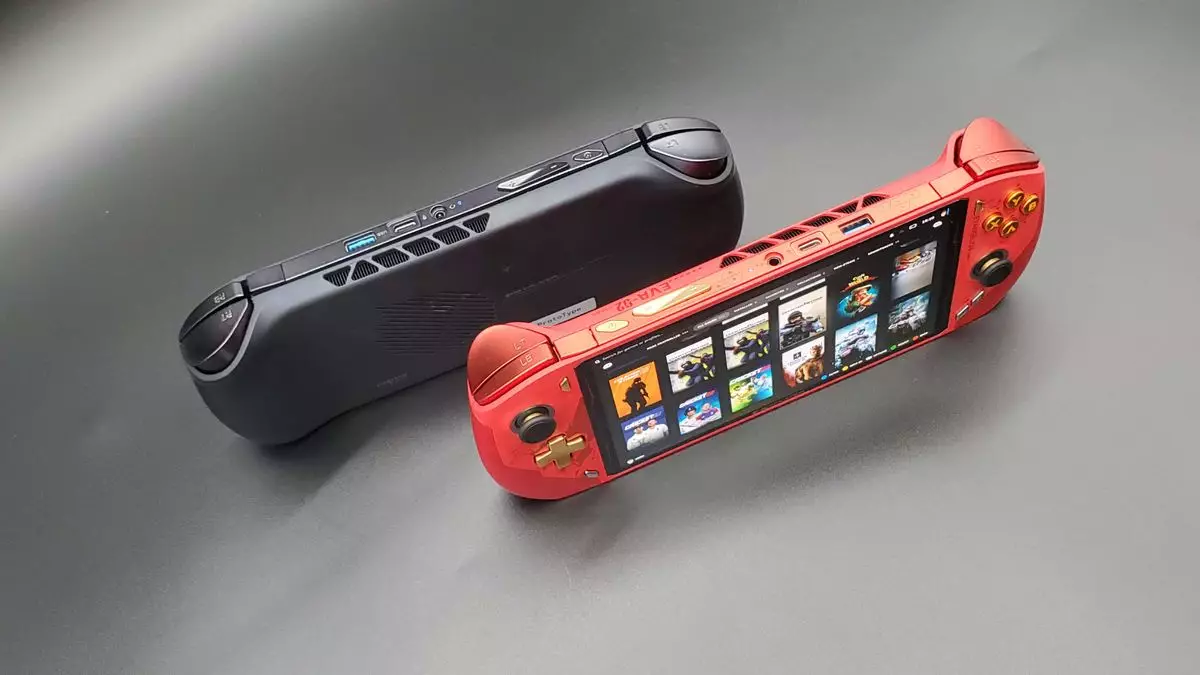The evolution of handheld gaming devices has reached a fascinating juncture with AMD’s recent announcement of its Ryzen AI Z2 Extreme APU. This new chip signals a shift in how processes like artificial intelligence (AI) are integrated into portable gaming systems. With the addition of a Neural Processing Unit (NPU) geared towards AI tasks, the potential for enhanced gaming experiences expands significantly. However, the question remains: do gamers truly need AI capabilities in their handheld devices?
This growing trend hints at a future where gaming is not just about rendering graphics but involves intelligent systems that adapt to the player’s style and preferences. The Ryzen AI Z2 Extreme, boasting fully enabled AI capabilities, aims to facilitate that future. Nevertheless, the actual utility of the NPU, especially concerning current gaming paradigms, merits a closer look.
The Specifications Game: What Lies Beneath
AMD’s “Z” series chips are tailored for handhelds, optimizing performance to meet the demands of gaming on-the-go. The Z2 Extreme’s architecture contains compelling specifications: 16 RDNA 3.5 graphics cores alongside eight Zen 5 CPU cores, partitioned into a mix of standard and compact cores. This design is impressive but also intricate, creating potential confusion for consumers attempting to navigate this new landscape.
A significant feature of the Z2 Extreme is its NPU designed to accelerate AI workloads. However, assessing its operational landscape reveals an intriguing contradiction. On one hand, the NPU promises to make handheld devices more appealing to consumers eager for the latest technology. On the other hand, most AI applications—which primarily utilize cloud infrastructure—are not natively optimized for local execution. This leads to skepticism regarding how beneficial the NPU will be for gaming or practical day-to-day usage.
Verifying its effectiveness within the existing gaming framework is essential, as gamers rely heavily on performance metrics. Because AMD has acknowledged the NPU’s presence but disabled it in current Z2 models, gamers might understandably feel that they are being offered a glimpse of potential rather than tangible improvements.
Diverse Architectures and Consumer Confusion
AMD’s approach with the Z2 APUs generates confusion, further complicated by the existence of various architectures under the same branding. The Z2 Go, which utilizes older Rembrandt architecture, stands in stark contrast to the cutting-edge design of the Z2 Extreme. Each variation within the Z2 lineup—differing in architecture and capabilities—creates a daunting challenge for average consumers who may find it difficult to discern which model suits their needs.
This fragmentation may ethically warrant concern. Are consumers being presented with a lofty vision of handheld gaming’s future while being tangled in a web of convoluted options? The advent of multi-generational architectures under the same product family can make it harder for customers to make informed decisions, potentially undermining the overall reputation of the brand.
Batteries and Performance: A Tenuous Balance
The promise of enhanced AI capabilities inevitably leads to questions regarding the energy consumption of these advanced processing units. Handheld devices, celebrated for their portability and convenience, often suffer from battery runtime limitations. The electric appetite of not only the CPU and GPU but also the NPU may threaten the long-favored charm of handheld gaming—long-lasting, unplugged enjoyment.
Launching the AI features could risk diminishing that crucial battery longevity, a critical aspect for gamers relying on devices for extended play without frequent recharging. Striking the right balance between performance enhancement and resource management will be pivotal in ensuring that the introduction of these advanced features serves the intended benefits rather than stealing away the fundamental qualities that gamers cherish.
AI in Gaming: The Hype and the Reality
The marketing allure of AI-enabled devices might seem irresistible, yet whether it translates to genuine improvements in gameplay or functionality remains to be seen. As highlighted, many AI-enhanced tools operate through cloud systems rather than local resources, which inherently diminishes the immediate impact of the NPU. Will the only real benefit be the ability for gaming handhelds to market themselves as AI-capable, or does this herald a deeper shift in gameplay?
While the idea of having an AI assistant like Copilot+ is an exciting prospect, the real-world application within gaming contexts could fall short. A thorough examination of the NPU’s effectiveness within the gaming landscape reveals an array of possibilities, but with an undeniable thread of uncertainty running through them. Whether or not this leap into AI will genuinely enhance gaming experiences is a question destined for active discussion within the community as the technology unfolds.

